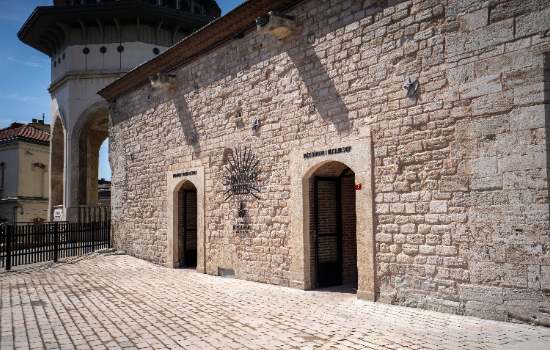The Taksim Maksemi, one of the iconic structures that gives its name to Taksim Cumhuriyet Square, has been transformed into the “İBB Cumhuriyet Museum” following a comprehensive restoration and conversion project by the Istanbul Metropolitan Municipality (İBB) Heritage teams.
Constructed between 1732-33 by Sultan Mahmud I, the Taksim Maksemi played a vital role for centuries in supplying Istanbul’s water and also gave its name to the surrounding square. In recent years, this historic building served as the Taksim Cumhuriyet Art Gallery before its transformation into the İBB Cumhuriyet Museum.
Opened to visitors on October 24, 2023, the İBB Cumhuriyet Museum stands as a significant symbol of the Republic’s spirit in Istanbul, presenting comprehensive content from the National Struggle period to the foundation of the Republic of Turkey. Its collection includes many of Atatürk’s personal belongings, such as his marshal uniform, boots, cap, and sweater, with much of the collection provided through the collaboration of the İBB Atatürk Museum in Şişli. The museum is designed not only as a space for narrating history, but also as a memory site, sharing the values of the Republic with today’s visitors.
Celebrating the 100th anniversary of the Republic, the Istanbul Metropolitan Municipality dedicated this special museum to the first century of the Republic of Turkey. Along with the nearby Republic Monument in Taksim Square, the new museum continues to serve as a crucial place for remembrance and gathering in Istanbul’s public memory.
About Taksim Maksemi
In the Ottoman period, Istanbul’s water needs were met by major water supply systems such as Halkalı Springs, Kırkçeşme Facilities, Üsküdar Waters, Hamidiye Waterworks, and Taksim Waterworks. Clean water was transported from its source to the city via aqueducts and channels and, after settling in filtering pools, was distributed from maksems (distribution chambers).
Taksim Maksemi, commissioned by Sultan Mahmud I and built between 1732-33, is one such structure. The inscription above its historic entrance on Istiklal Street relays the building’s construction date and context. Its primary function was to distribute water delivered to the city by the Taksim Waterworks. Water arriving in the chamber, called the “sandık,” was poured out via a “chörten” (a type of stone water spout) protruding from the wall. The inscriptions flanking the chörten record the amount of water allocated to the fountains sponsored by prominent statesmen, including Grand Vizier and Admiral Cezayirli Gazi Hasan Pasha and Grand Vizier Yusuf Pasha.
Immediately behind Taksim Maksemi is the Taksim Water Reservoir, which played a crucial part in regulating water flow and controlling distribution.
